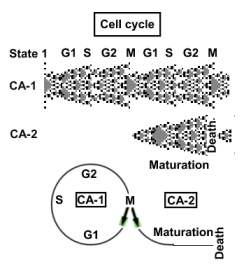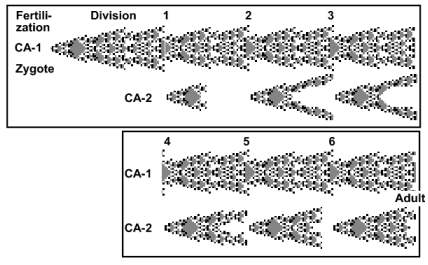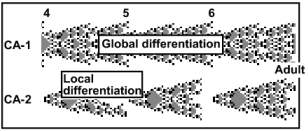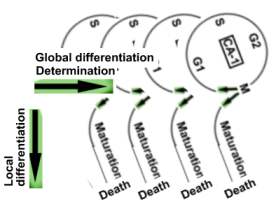 |
Embryogenesis
The proliferon model illustrates some
important features of embryogenesis. We start with the cell cycle. Before
a cell enters mitosis and divides, it traverses
three preparatory phases: G-1, S, and G-2. During the first it prepares
enzymes for DNA multiplication. S, stands for synthesis. During this phase the cell doubles its
genetic material. During the G-2 phase it prepares for cell division
(mitosis).
 |
 |
 |
We may now distinguish between two kinds of differentiation: Global and local. The first marks the change of the stem process. Although its structure does not change, its age does. The process ages and when dividing, the new stem cell inherits its age. While zygote age = 0, stem cell age > 0, and it rises with every division, which bears on the CA-2 structure. This phenomenon is called determination. When the real zygote divides, each of its progeny may differentiate into a separate organism. As embryo grows the stem cell loses this capacity, and may differentiate only into an organ.Later on the potential of its stem cells to differentiate narrows, and at birth stem cells are determined to differentiate into specified tissues.
 |
 |
Further reading: Streaming
tissues
Setup
restoreparams[1,1,1];
restoreparams[2,2,1]; If stateno[[1]]==46, killca[2], maxage+=4; dying[2,maxage, 0]; go [100];